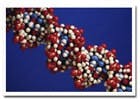A two-year animal study conducted by National Toxicology Program scientists “clearly demonstrates” that hexavalent chromium, also known as chromium 6, is carcinogenic in drinking water, Environmental Health News reported. Rats and mice consumed water containing several different doses of the compound and contracted malignant tumors in their small intestines and mouths.
The conclusion comes after more than a decade of debate, and will likely spur more stringent standards for hexavalent chromium in water.
Although it has been known that people can contract lung cancer from inhaling chromium 6, toxicologists were uncertain whether it results in cancer when consumed.
“I think it’s resolved, as much as it can be resolved,” said George Alexeeff, deputy director of scientific affairs at California’s Office of Environmental Health Hazard Assessment.
California is expected to announce a proposal to set a new health guideline within a few weeks, according to Environmental Health News.
Roberto Gwiazda, an assistant researcher at University of California at Santa Cruz’s Department of Environmental Toxicology, said the new study “settles the issue,” and is a “milestone.”
However, Gwiazda said, using the new research “to support a drinking water standard is a different matter” because extrapolating it to humans remains controversial.
Applying the data to humans assumes that the rodents’ stomach eliminated the same fraction of chromium 6 at high doses that the human stomach would at lower doses, he said.
“This assumption is flawed in my view because the stomach has a very high reducing capacity,” Gwiazda said.
Such extrapolations could lead to an overly restrictive standard, he said. “On the other hand,” he added, “there is probably a subpopulation of sensitive individuals with diminished stomach reducing capacity due to illness.” For those people, a standard based on the animal data “may not be protective enough,” he said.
Sam Delson, the Office of Environmental Health Hazard Assessment's deputy director of external and legislative affairs, said California state scientists will release their draft Public Health Goal for public comment “within the next couple of weeks."
The new study, Alexeeff said, “is a large foundation of our results.”
The state health department will use the number that Alexeeff's staff recommends to formulate a maximum allowable amount for water, according to the report. The health department considers cost and technical feasibility when setting the standard.
“We come up with a goal, and it’s up to the health department to propose a maximum contaminant level,” Alexeeff said.
U.S. Environmental Protection Agency (EPA) is required by federal law to review water standards every six years, and EPA officials also are evaluating the national 100 ppb standard and plan to release their results this fall.
Chromium is often used in metal plating, stainless steel production, wood preservation and textile manufacturing. It has been detected, at levels mostly under the existing 50 ppb state standard, in 30% of drinking water sources in California, according to the state health department.
Source: Environmental Health News


